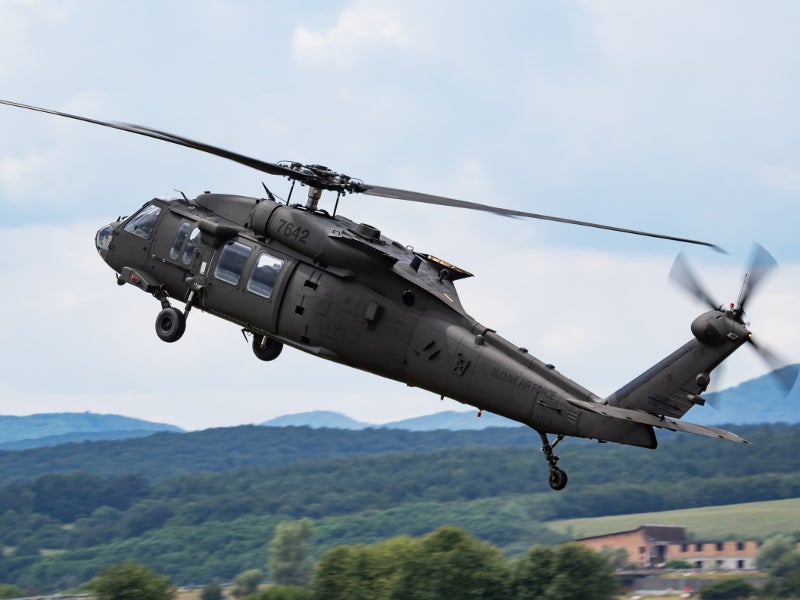Specialist Insights: Enhancing Performance in UH 60 Helicopter Workflow
Comprehending the Mechanics and Engineering Behind Uh 60 Helicopters
The UH-60 helicopter, frequently called the Black Hawk, stands as a pinnacle of modern-day rotorcraft technology, embodying a blend of durable engineering and detailed auto mechanics. From its beginning to its current iterations, the evolution of this airplane showcases a fusion of technology and functionality. As we peel off back the layers of the UH-60's layout, a world of elaborate systems and careful design emerges. Understanding the mechanics and engineering behind this flexible airplane introduces a world where accuracy meets power, and where each component plays a critical duty in achieving flight.
Background of UH-60 Helicopters
The background of UH-60 helicopters traces back to the late 1970s when the USA Army sought a innovative and functional energy helicopter to replace its aging fleet. In response to this demand, the Sikorsky Aircraft Corporation created the UH-60 Black Hawk helicopter. Presented in 1979, the UH-60 rapidly ended up being a staple in armed forces procedures because of its impressive capabilities.
The UH-60 was designed to excel in a variety of missions, including troop transport, clinical discharge, electronic warfare, and unique procedures. Its capability to adjust to various duties made it a beneficial asset to the united state Army and other army pressures worldwide
Over the years, the UH-60 system has actually undertaken a number of upgrades and variants to boost its performance and equal developing mission needs. These helicopters have seen substantial service in problems such as the Gulf War, Afghanistan, and Iraq, showcasing their reliability and convenience in varied functional atmospheres. The UH-60's rich background is a testimony to its enduring heritage as a leading energy helicopter.

Engine and Power Equipments
Making use of sophisticated propulsion modern technology, UH-60 helicopters are outfitted with innovative engine and power systems to make certain optimum efficiency and dependability in a series of operational scenarios. The UH-60, typically referred to as the Black Hawk, is powered by two General Electric T700-GE-701D engines, each qualified of supplying up to 1,940 shaft horse power. These turboshaft engines give the essential drive for the helicopter to accomplish its goals successfully, including troop transportation, medical evacuation, and fight support.

Rotor System and Aerodynamics
How do the rotor system and aerodynamics of UH-60 helicopters add to their operational efficiency and flight abilities? The blades system of the UH-60 helicopter plays an essential function in supplying lift and propulsion. The UH-60 includes a four-bladed, completely verbalized rotor system that enables for high maneuverability and stability during flight. This design enables the helicopter to perform a variety of missions, from transportation and clinical discharge to combat operations.
Aerodynamics also play a vital duty in the performance of UH-60 helicopters. The streamlined body and blades blade style decrease drag, allowing the helicopter to achieve higher speeds and much better fuel efficiency. The wind resistant layout of the UH-60 additionally contributes to its ability to operate in diverse ecological conditions, including hot temperatures and high altitudes.
Avionics and Flight Control Solution

In its complex control with the rotor system and the rules of aerodynamics of UH-60 helicopters, the avionics and flight control systems form an essential network of modern technologies forming the aircraft's functional capacities. Avionics include the electronic systems made use of for communication, navigating, and checking different aircraft features. In the UH-60, these systems include electronic screens, communication radios, general practitioner navigation, climate radar, and auto-pilot systems. These avionics systems provide crucial details to the pilots, boosting situational understanding and making sure safe and reliable operation of the helicopter.
The trip control systems of the UH-60 are responsible for translating the pilot's inputs into the proper changes to the rotor system, making sure secure trip and ability to move. These systems consist of hydraulic actuators, servos, and computers that work with each other to control the main and tail blades, these details along with other flight control surfaces. By exactly handling the helicopter's flight dynamics, these systems enable pilots to carry out a broad range of missions, from transport and search-and-rescue to combat operations, with precision and confidence.
Role and Applications in Aviation
Avionics systems in UH-60 helicopters incorporate a variety of digital systems that aid in navigating, communication, tracking, and controlling different airplane functions. These systems consist of digital display screens, autopilot systems, interaction radios, GPS navigating devices, and climate radar. Additionally, these systems integrate safety functions such as auto-pilot modes, terrain understanding warning systems, and stability enhancement systems to enhance the overall security and functional capabilities of the UH-60 helicopters in different goals, including army anonymous transportation, medical discharge, search and rescue, and aerial firefighting.
Conclusion
In conclusion, the UH-60 helicopter is a flexible airplane with a rich history and advanced design. Its engine and power systems, blades system, aerodynamics, avionics, and flight control systems all interact to make it a reliable and efficient machine. The UH-60's role and applications in air travel are huge, varying from army operations to search and rescue objectives. Its proceeded growth and usage show its relevance in the area of aviation (uh 60).
In its intricate coordination with the rotor system and aerodynamics of UH-60 helicopters, the avionics and trip control systems create a crucial network of technologies forming the airplane's operational capabilities.The flight control systems of the UH-60 are liable for converting the pilot's inputs into the suitable adjustments to the blades system, making certain secure flight and maneuverability. Avionics systems in UH-60 helicopters encompass a range of digital systems that aid in navigation, communication, informative post surveillance, and managing different aircraft features. Furthermore, these systems incorporate safety and security functions such as auto-pilot modes, surface recognition cautioning systems, and stability augmentation systems to enhance the total security and functional abilities of the UH-60 helicopters in various goals, consisting of troop transportation, medical discharge, search and rescue, and aerial firefighting.
Its engine and power systems, blades system, aerodynamics, avionics, and flight control systems all function together to make it a reliable and reliable equipment.